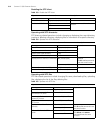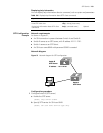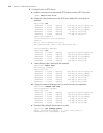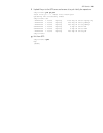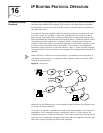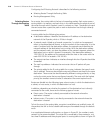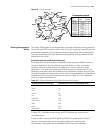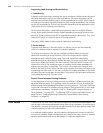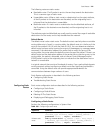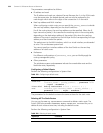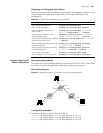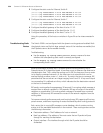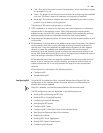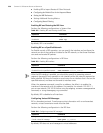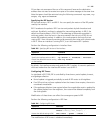
220 CHAPTER 16: IP ROUTING PROTOCOL OPERATION
Supporting Load Sharing and Route Backup
I. Load sharing
Supports multi-route mode, allowing the user to configure multiple routes that reach
the same destination and use the same precedence. The same destination can be
reached using multiple different paths, whose precedences are equal. When there is
no route that can reach the same destination with a higher precedence, the multiple
routes will be adopted by IP, which will forward the packets to the destination using
these paths so as to implement load sharing.
For the same destination, a specified routing protocol may find multiple different
routes. If the routing protocol has the highest precedence among all active routing
protocols, these multiple routes will be regarded as currently valid routes. Thus, load
sharing of IP traffic is ensured in terms of routing protocols.
The Switch 5500 supports three routes to implement load sharing.
II. Route backup
Supports route backup. If the main route is in failure, the unit will automatically
switch to a backup route to improve the network reliability.
To achieve route backup, the user can configure multiple routes to the same
destination according to actual situation. One of the routes has the highest
precedence and is called the main route. The other routes have descending
precedences and are called backup routes. Normally, the router sends data using the
main route. When the line fails, the main route will hide itself and the router will
choose from one of the remaining routes as a backup route whose precedence is
higher than the others to send data. This process is the switchover from the main
route to the backup route. When the main route recovers, the router will restore it by
re-selecting the main route. As the main route has the highest precedence, the router
will select the main route again to send data. This process is the automatic switchover
from the backup route to the main route.
Routes Shared between Routing Protocols
As the algorithms of various routing protocols are different, different protocols can
generate different routes. This situation creates the problem of how to resolve the
different routes being generated by different routing protocols. The Switch 5500 can
import the information of another routing protocol. Each protocol has its own route
redistribution mechanism. For details, refer to “Enabling RIP to Import Routes of
Other Protocols” on page 230, “Configuring OSPF to Import the Default Route” on
page 250 and “Importing Routing Information Discovered by Other Routing
Protocols” on page 261.
Static Routes A static route is a route that is manually configured by the network administrator. You
can set up an interconnected network using static routes. However, if a fault occurs in
the network, the static route cannot change automatically to steer packets away from
the fault without the help of the administrator.
In a relatively simple network, you only need to configure static routes to make the
router work normally. Proper configuration and usage of the static route can improve
network performance and ensure bandwidth for important applications.



